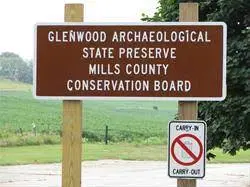
Introduction to Archaeology
The Importance of Archaeology
Archaeology plays a pivotal role in our understanding of history, as it aids in deciphering the mysteries of the past. At Glenwood, the study of archaeological remains provides invaluable insights into the lives of the primitive settlers, their customs, and societal structures. From the smallest artifact to grander structures, each discovery brings us a step closer to painting an accurate picture of our ancestors’ existence. Preserving these invaluable pieces of history allows future generations to embrace their cultural heritage and learn important lessons from the past.
Common Archaeological Methods
Within the realm of Glenwood Preserve’s archaeology, experts use various methodologies to unearth the rich history concealed in its terrain. Many favor the excavation approach, which involves carefully digging and sifting through layers of soil to reveal artifacts and structures. Surveying is another widespread method, seeking to locate and map significant sites. Professionals also employ laboratory analysis, where they meticulously inspect the recovered items to glean more about the era and culture to which they belong.
Unfolding the Mysteries of Glenwood
Overview of Glenwood Preserve
Tucked away in Mills County, Iowa, the Glenwood Archaeological State Preserve serves as a storied gateway to the region’s rich past. Exuding an aura of frozen time, this 180-acre sanctuary offers a mesmerizing journey back through millennia. At its heart, it harbors remnants of earth lodge dwellings, encampments, burial sites, and fortifications—silent testimonies of the ancient Woodland and Plains Indian cultures that graced the landscape between 500 B.C and 1300 A.D.
It is not just a haven for history enthusiasts and archaeologists but also a thriving ecological sanctuary, home to native Iowan flora and fauna. Here, scenic beauty merges with echoing pasts to create a potent blend of cultural and natural allure, making it an unmissable destination for every intrepid traveler, researcher, or trekker alike. The Preserve is more than a mere point in a tourist itinerary. It is the epitome of an enigmatic past, beckoning explorers to delve into its untold stories and its undisturbed sanctity.
Understanding its Significance in History
The Glenwood Archaeological State Preserve offers an intriguing glimpse into the lives of its ancient inhabitants, holding immense historical significance as it represents remnants of an aged and sophisticated society. Dating back to 150 BC, this preserve showcases the realm of the Woodland Indians with around 55 intact burial mounds, encapsulating their cultural interactions, social organization, and spiritual beliefs. This site, therefore, serves as a window into Native American history and their relationships with the landscape – casting light on anthropological mysteries and providing profound insight into this fascinating culture. Hence, Glenwood not only preserves the past but also educates and informs our understanding of history.
Surprises Unearthed during Excavation
The excavations at Glenwood have led to several intriguing discoveries that breathed new life into our understanding of the area. Artifacts dating back to the Woodland and Mississippian periods, around 900-1300 AD, have been unburied. Items such as stone tools, pottery, burial mounds, and even the remains of domesticated plants offer a unique glimpse into the lives of those who inhabited the region. Notably, an earth lodge—a rare piece of architecture typically indicative of social or ceremonial use—was found, generating increased interest among researchers. With each dig, the rich history of Glenwood continues to illuminate our past.
A Look at the Finds and Artifacts
Description of Major Finds

The fascinating artifacts uncovered at the Glenwood Archaeological State Preserve provide rich insights into ancient life and cultures. One of the most prominent discoveries includes a collection of intricate, worked stone tools, illustrating the skill and technical knowledge of their creators. These tools span a range of purposes, from hunting equipment to cutting tools, each one signifying the advancements of the society of that era.
Coupled with this, the remains of pottery shards offer a glimpse into the artistic and domestic aspects of life. Perhaps one of the most significant finds, however, are the extensive burial mounds. These sacred sites contain beautifully crafted jewelry and ornamental artifacts, suggesting the site was not only for the everyday living but also held spiritual significance. With every artifact unearthed, we unlock another facet of the age-old stories hidden within the Glenwood preserve.
How Artifacts Reflect Cultural Practices
Within the rich layers of the Glenwood Archaeological State Preserve, a plethora of artifacts have been unearthed, providing valuable insights into the cultural practices of the prehistoric societies that once lived here. These finds serve as testament to the daily routines, beliefs, and artistic sensibilities of these civilizations, allowing modern-day enthusiasts and experts a tangible connection to the past. For instance, the prevalence of pottery shards suggests a community deeply invested in the creation of ornamental and utilitarian ceramics.
Furthermore, intricate carvings on stones and bones reveal not only the communities’ artistic prowess but also their spiritual beliefs and narrative traditions. Numerous tools, made of various materials like stone, bone, and wood, paint a picture of a society well-adapted to its environment, utilizing the resources around it effectively. Similarly, the remains of structures suggest sophisticated social organization and construction techniques. These relics, frozen in time, offer compelling snapshots of the cultural practices once manifested within Iowa’s largest archaeological preserve.
Related: What is the Ephesus Archaeological Museum?
The Indigenous Cultures of Glenwood
Tribes and Their Lifestyles
The rich heritage of Glenwood is deeply rooted in the lives and customs of various indigenous tribes who dwelt there, chiefly the Ioway, Omaha, Ponca, and Otoe-Missouria. These tribes lived in small villages, with a lifestyle centered around agriculture, hunting, and gathering. They cultivated crops such as corn, beans, and squash, known as the ‘three sisters’, reflecting their symbiotic growth. In addition, they hunted game from the lush forests and fished from the Missouri River and its tributaries.
Their houses, called ‘earth lodges’, were semi-subterranean structures with a wood and earth construction, showcasing their ingenious use of available resources. Many of their traditions, from pottery making to intricate beadwork, continue to be celebrated in the Glenwood area, a testament to their lasting impact on the region.
Impact of Migration and Integration
Over the centuries, the indigenous cultures of Glenwood have undergone numerous modifications and transformations due to migratory cycles and societal integration. These fluxes significantly influenced their lifestyles, traditions, and artistic expressions. Incoming groups brought fresh perspectives, technologies, and diverse spiritual beliefs, which eventually merged with prevailing native customs.
Consequently, the archaeological patterns observed in Glenwood today demonstrate a clear reflection of the fusion of these various elements. Furthermore, integration, and trade with other regional cultures also led to a noteworthy evolution in their pottery designs, house building techniques, and agricultural methods. These dynamic cultural shifts add a unique richness to Glenwood’s archaeological history, allowing researchers to explore the intricacies of cultural interaction and the enduring resilience of indigenous societies even in the face of migratory influences and integration.
Preservation and Conservation of the Site
Preservation Techniques and Challenges
Erect in the heart of Iowa, the Glenwood Archaeological State Preserve is a living testament to the rich anthropological legacy of the region. Notwithstanding, ensuring the robust preservation of this historical cornerstone is not absent of significant hurdles. Despite the ongoing challenges such as weather erosion, fluctuating temperature conditions, and occasional human interference, experts have implemented a range of advanced techniques and strategies to maintain the preserve’s integral condition.
These include regular site monitoring, maintaining the appropriate environmental conditions, and performing essential restoration works. Additionally, promoting community engagement through education about preserving cultural heritages plays a pivotal role in the protection efforts. Digital preservation tools like 3D modelling and documenting pictorial data also play a handy part. However, with the ever-increasing technological advancements and evolving environmental conditions, the battle for preservation at Glenwood is far from its end, standing as an agile front for preservationists worldwide.
The Role of the Public in Conservation
Engaging the community plays a significant role in the preservation and protection of the Glenwood Archaeological State Preserve. Public participation can take various forms, from volunteering at the site to promoting awareness about its significance. Volunteers can be involved in site maintenance work, guided tours arrangement, or even in cataloguing the artifacts.
Community members can also contribute by participating in fundraising events, or by donating directly to conservation efforts. Additionally, by learning and spreading knowledge about the site’s history and cultural importance, locals can help foster respect and appreciation for the preserve. These collective efforts from the public don’t only maintain the condition of the site but also passes its rich legacy to future generations. The public’s role in the preservation and conservation of the site is thus undeniable as their efforts directly influence the longevity and integrity of the Preserve.
Future Prospects for Glenwood Preservation
Looking forward, the Preserve aims to continue its commitment to protect and promote Glenwood’s rich heritage. There will be continued emphasis on scientific research and educational programs. Expected developments include frequent archaeological expeditions and interactive exhibits, to further enrich visitor experience and appreciation of this historic site. Efforts to secure additional funding and partnerships will also be pursued.



